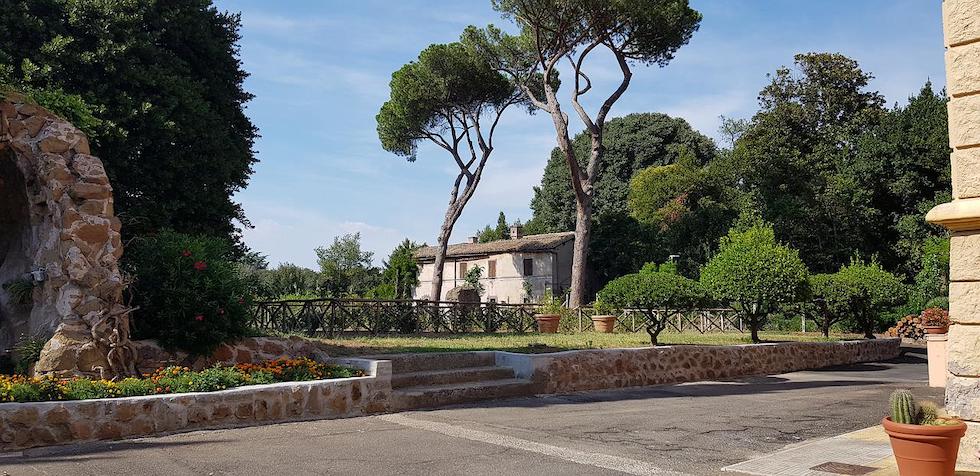1) Let’s start with a basic fact: do you know what catacombs are?
The word catacombs comes from the elating ad catacumbas, which in turn seems to come from the Greek expression kata koumbas = at/among the grottos.
The catacombs of the Appian Way are essentially the underground graveyards of the first Christians in Rome, who had to bury their dead outside of the city. Even as early as the 5th century BC, burials within the city walls were forbidden, so tombs were built on the outskirts of Rome. As an important consular road connecting Rome with the south, the Appian Way was a popular spot for burials. The catacombs are excavated in a type of stone that is typical of central Italy and called tufa. The catacombs were abandoned in the Middle Ages and rediscovered in the Renaissance. Not all of them can be visited and the only way to access them is by a guided tour.
2) Are there any limitations to access?
Due to their underground nature, the catacombs cannot be visited by people with mobility difficulties. They are not recommended for people who are afraid of narrow spaces or for people with heart problems.
Our advice is to bring a jacket and scarf even in the height of summer, because being constructed underground they are cold and damp, the average temperature being 15 degrees Celsius.
3) Which one should be chosen for a first visit?
Definitely the ones we recommend you choose for your first visit to the catacombs are the Catacombs of San Callisto, the largest and most visited in Rome. They are the tombs of about half a million Christians, among which there are some illustrious burials like several popes and Santa Cecilia, resting in a chamber aptly called ‘Little Vatican’. However, don’t expect to see them because they were moved to other locations. The visit inside takes about 45 minutes and you will definitely be impressed!
4) Are there more catacombs on the Appian Way?
There are several catacombs on the Via Appia, but the one with the most fascinating history is certainly that of San Sebastiano.
The catacombs of St Sebastian, which are also located on the Appian Way and have a total of 12 km of underground tunnels, were the first to be called ‘catacombs’.
The church of San Sebastiano is famous because it is one of the churches that is part of the pilgrimage of the 7 churches, instituted by S. Filippo Neri and it preserves inside one of the arrows extracted from the body of San Sebastiano. St Sebastian was a Roman soldier who converted to Christianity under the Emperor Diocletian and was condemned to death because of this. He was tied to a tree and shot by a large Being still alive; he challenged the emperor Diocletian as soon as he had recovered his strength. The Emperor took Sebastiano to the Palatine Hippodrome where he was beaten to death and his body thrown into the Cloaca Massima. The visit to these catacombs only includes access to certain areas: in the deepest region, from the cubicle of Jonah, so called because of the 4th-century frescoes that decorate it and depict four scenes from the life of this biblical character, one arrives at the crypt of St Sebastian and the square where there are three pagan mausoleums later used by Christians.
5) Did you know that near the catacombs you can find the Appian antica park? A great place to relax after your visit
The Via Appia Catacombs have privileged access to the Parco dell’Appia Antica, a green lung in the heart of Rome. If you want to relax after visiting the catacombs and take a walk in a lush green park, this is the place for you. Inside the park you will find not only the catacombs, but also the famous nymphaeum of Egeria, the Villa of Maxentius and many other things to discover.
If you have children with you there is also a farm where your children can see lots of animals, including horses and ostriches!
What are you waiting for to go on a Private tour of the catacombs?


